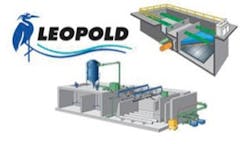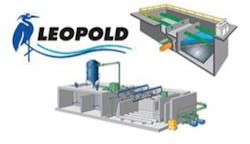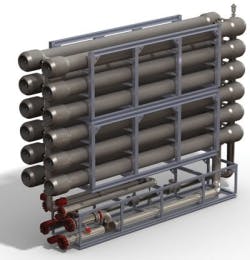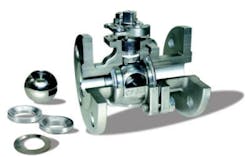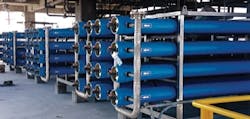By Joseph M. Wong
The earth has plenty of water but most of it (97.5%) is too salty for human use. The remaining 2.5% is fresh water but only <1% of this fresh water is available for direct human use. Due to continual population growth, agricultural and industrial developments, and climate change effects, water resources scarcity has become a critical issue in many parts of the world. Water reclamation and reuse in municipalities and industries is becoming an important part of the water supply portfolio as wastewater is a reliable and sustainable water source.
One of the major factors in the acceleration of water reuse is the advent of advanced membrane treatment technologies and their cost reductions in the last 10 to 15 years. Membrane technologies include microfiltration (MF), ultrafiltration (UF), nanofiltration (NF) and reverse osmosis (RO).
The petro processing facilities, including refineries and petrochemical plants, usually consume a large quantity of water, and the resultant wastewater is well-treated prior to being discharged to the environment. For the last 12-13 years the worldwide petro industry has joined the bandwagon in making use of membrane technologies in water reuse. However, except for some cases of reusing recycled municipal effluent in California refineries for cooling and boiler feed, petro facilities in the U.S. are slow in adopting membrane technologies for reusing industrial wastewater effluent.
However, the recent population growth and long-term drought in Texas has caused some petro facilities to seriously consider reuse of industrial effluent to improve the long-term reliability of water supply.
Background
Using MF or UF in municipal wastewater reuse, especially for RO pretreatment, started to multiply in the late 1990s. To date, the integrated use of MF or UF with RO has become a standard in municipal advanced recycled water projects, especially for indirect potable water reuse cases where the recycled water is re-injected to the groundwater aquifer to augment existing water sources. Good examples include the 270,000 m3/d Groundwater Replenishment System of the Orange County Water District in Southern California, and several significant NEWater plants in Singapore.
Historically, petrochemical plants and refineries have used RO as pretreatment for ion exchange demineralizers to produce pure water for boiler feed and process uses. Since 1999, more than 10 UF (ZeeWeed®) systems have been installed as pretreatment for RO in petro facilities for boiler feedwater demineralization. RO, in the form of VSEP (Vibratory Shear Enhancing Processing), has also been used in the full-scale for removing selenium from stripped sour water to help a large refinery meet stringent discharge requirements. More recently, several refineries in California have started using highly treated municipal effluent as cooling tower makeup and boiler feed water.
The first reported successful full-scale use of integrated membranes of UF/RO for in-plant water reclamation in a petrochemical plant is the China American Petrochemical Company (CAPCO) purified terephthatic acid (PTA) plant in Taiwan. The 9,000 m3/d CAPCO UF/RO system was commissioned in 2000 and has been successfully operated for more than 10 years.
The second reported large-scale use of UF/RO for a petro facility is for treating effluent from a biological treatment system at the PEMEX refinery in Minatitlan, Veracruz, Mexico. The 26,000 m3/d UF/RO system was commissioned in 2001 and is part of the zero liquid discharge system at the refinery. PEMEX also has two other refineries that use RO for water reclamation but without UF as pretreatment.
Since 2000, a total of more than 20 UF or UF/RO systems have been installed at petro facilities throughout the world for water reuse. More of the UF systems are used in Membrane Bio-Reactors (MBRs) than in tertiary filtration. The MBRs are either with or without RO. Out of the 20+ UF systems, five are of the pressure type; the rest are of the submerged type. With the exception of one small MBR installation (190 m3/d) at Marathon Oil’s barge cleaning and maintenance terminal in Kentucky all the significant installations are outside of the United States.
Case Studies
The following presents three representative case studies of using membrane technologies for water reuse in petro facilities throughout the world. Some significant similar upcoming projects are also listed.
Case Study No. 1 – CAPCO UF/RO Wastewater Reclamation System
The CAPCO (wastewater reclamation project near Kaohsiung, Taiwan, is the first reported successful reuse project using integrated membranes of UF/RO in a petro facility. It was commissioned in April 2000. The Kaohsiung CAPCO plant is one of the largest purified terephthalic acid (PTA) producing plants in the world. PTA was one of the most profitable petrochemicals for many years.
The feasibility study for the wastewater reclamation project that started in 1993 and the subsequent two-year pilot-testing program were completed in 1996.
The PTA plant uses approximately 48,000 m3/d of fresh water supplied from the water company -- 52 percent as cooling tower makeup and 40 percent as feed to the deionization (DI) system to produce highly purified water for PTA process and boiler feed. Approximately 20,000 m3/d of wastewater, including process wastewater, cooling tower blowdown, DI system regeneration waste and miscellaneous wastewater, is generated for treatment and disposal to a central industrial effluent management system for combined ocean discharge.
The treatment system treats a combination of biological treatment system effluent and cooling tower blowdown. The two streams had complementary characteristics in minerals content so that the combined stream would have a decent RO recovery.
The treatment train includes a blend feed tank, oxidation by sodium hypochlorite (NaOCl) for manganese and cobalt removal, dual media filtration, granular activated carbon (GAC) for organics removal, cartridge filtration, ultrafiltration (UF), ultraviolet (UV) disinfection, reverse osmosis (RO) with acid feed, and degasification to remove carbon dioxide.
The purified water, which has a TDS much lower than that of the municipal-supplied water, is recycled to the PTA plant’s DI system as feedwater. Using the recycled water as DI feedwater can save a major portion of the DI regeneration cost. Together with the reductions in water purchase cost, wastewater discharge fees and precipitation chemical costs, implementing and operating a 15,000 m3/d (influent) reclamation system can yield a simple payback of four to five years.
During construction, however, CAPCO only constructed a 9,000 m3/d (influent) system, which made the actual payback significantly longer. Construction was completed in 1999, but due to startup problems the system was not commissioned until April 2000.
The UF/RO system has achieved an overall 73 to 75 percent recovery, higher when cooling tower blowdown was not used in the influent to the system. With the exception of a 6-month shutdown in 2008 due to business decisions, the system has been operated continuously for more than 10 years and has saved a huge amount of fresh water for the community. The average replacement intervals for UF and RO membranes were five and four years, respectively, which were comparable to the useful lives guaranteed by membrane vendors.
Case Study No. 2 – PEMEX Minatitlan Refinery UF/RO Water Reuse System
The recycled water project in PEMEX’s refinery located in Minatitlan, Mexico, has been described previously in the literature. This case study is worthy of mentioning as it is the first refinery to use UF/RO technologies in its recycled water system which has been operating successfully for over 10 years.
The refinery is one of Mexico’s largest refineries (20,325 m3/d or 173,200 bbl/d). The refinery’s wastewater treatment processes include primary clarifier, dissolved air flotation (DAF), activated sludge aeration basin, secondary clarifier, membrane filtration (UF), and RO. The RO permeate is reused in the refinery for high quality uses, such as boiler feed. The treatment system is designed for a peak flow of 26,000 m3/d. The overall water recycle efficiency is approximately 70 percent based on RO permeate production.
The UF system uses the submerged ZeeWeed® 500b membranes configured in seven parallel trains such that one could be taken off-line for cleaning while others remained in production. Each train has 11 membrane cassettes with room for four additional cassettes in case of future plant expansion. The UF system provides excellent protection for the RO membranes, and yields turbidity <0.1 NTU, oil and grease <0.2 mg/L, and SDI<3. The UF system recovery is between 90 percent and 95 percent.
Case Study No. 3 – ENI Gela Refinery, Sicily, Italy, MBR/RO System
The ENI Gela Refinery located in Sicily has a refining capacity of 11,735 m3/d or 100,000 bbl/d. It processes the heavy crude oil from the ENI fields in offshore Sicily and the extracted oil from the neighboring soil to produce automotive fuels, residential heating oils and petrochemical feedstocks.
The refinery installed and commissioned a 7,200 m3/d MBR/RO system in March 2007 to treat contaminated groundwater and produce 5,040 m3/d of recycled water to feed the demineralization system in the refinery for reuse. Approximately 4,800 m3/d of groundwater heavily contaminated with hydrocarbons and arsenic is pretreated by oil/water separation, oxidation, coagulation, high-rate clarification (DensaDeg®), sand filtration, and granular ferric hydroxide adsorption (for arsenic removal).
The pretreated groundwater combines with 2,400 m3/d of contaminated groundwater for feed to the 7,200 m3/d MBR treatment system, which includes pre-denitrification, nitrification and post-denitrification tanks, and four ZeeWeed® 500d trains. The MBR effluent is fed directly to a three-train RO system with a water recovery of 70 percent. The TDS of the groundwater is reduced from 8,000 mg/L to 80 mg/L in the RO permeate; other constituent concentrations are insignificant. The 2,160 m3/d RO reject stream is treated by a GAC system prior to discharge to the ocean and meets all discharge requirements.
Other Reuse Projects
The case studies described above are only representative installations of the 20+ successful projects since 2000. There are also new projects currently being planned, designed or constructed. Some of the reported projects include a 5,300 m3/d ZeeWeed® MBR system in the CCRL Refinery in Regina, SK, Canada, to be commissioned in 2012; a 33,000 m3/d UF/RO system in the Shell Pearl Gas-to-Liquid Refinery, Qatar; a 10,800 m3/d Petro MBR system in the Repar Refinery in Araucaria, Parana, Brazil, to be commissioned in 2012; a 100,900 m3/d ZeedWeed® MBR/EDR/RO system in the Teneco Refinery in Nizhnekamsk in Russia, to be commissioned in 2012; a 15,000 m3/d ZeeWeed® MBR system in the Lukoil Volgograd Refinery in Russia, to be commissioned in 2013; and finally a 6,000 m3/d MBR/RO systems in the CPC Lin Yuan Petrochemical Plant near Kaohsiung, Taiwan, to be commissioned in 2012.
There are also potential membrane projects that had gone through pilot testing to evaluate the feasibility of water reuse in refineries and petrochemical plants. Examples include the MF/MBR pilot testing at the Coffeyville Resources Refining & Marketing Refinery in Kansas and the MBR/HERO™ pilot testing at a Middle East petrochemical plant. There are probably many more projects in the study or planning stage and many small projects that have been implemented without being reported in the literature. It is impossible to include every project in this review.
Conclusion
Based on the review of the case studies and other successful installations, it appears that using membranes for treating and reusing petro wastewater has gained considerable experience and is generally feasible; however, there are some unsuccessful installations due to problems of fouling by oil and organics, scaling by metals, high-temperature effects on membrane and bonding materials, and very expensive and rapid membrane replacements. These are usually not reported in the literature.
It is recommended that prior to implementing full-scale projects, longer-term pilot tests be conducted for each application unless there is considerable operating experience available from other facilities where the water quality characteristics and operating conditions are quite similar.
It is expected that water scarcity will continue to be a problem in many parts of the world, especially with climate change effects, and membranes will play greater roles in water reuse in the petro industries in the future.
About the Author: Joseph M. Wong is Chief Engineer of Brown and Caldwell, with more than 30 years of experience in industrial and municipal water/wastewater treatment and reuse. He developed and designed the world’s first major water reuse project in the petrochemical industry using membrane technologies of UF/RO. He has BS and MS degrees in Chemical Engineering from University of Washington, and is a registered professional engineer in California, Florida, and Washington. He is also a Board Certified Environmental Engineer. He may be contacted at [email protected]
